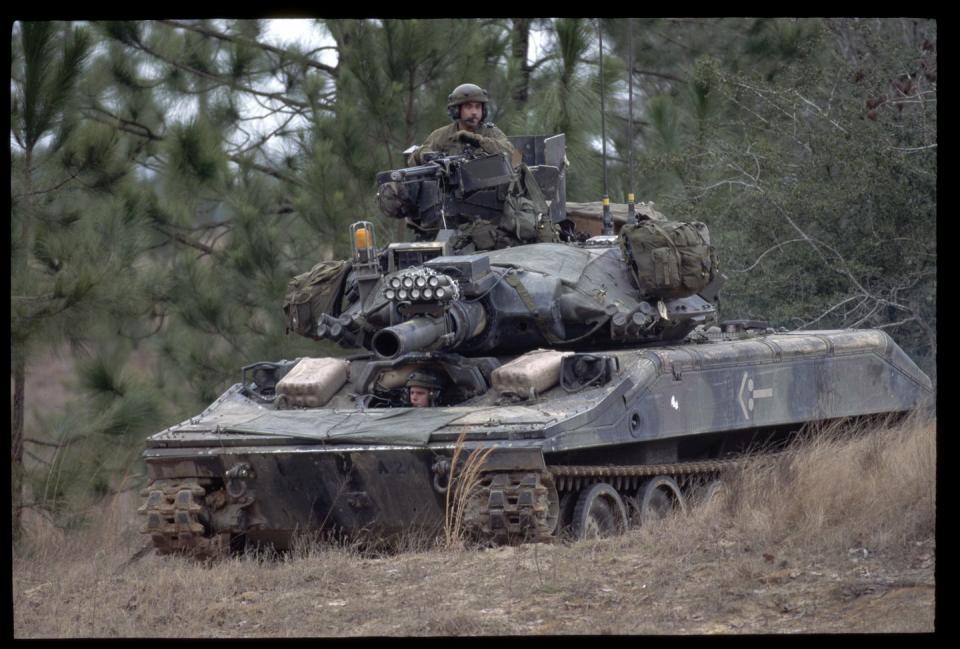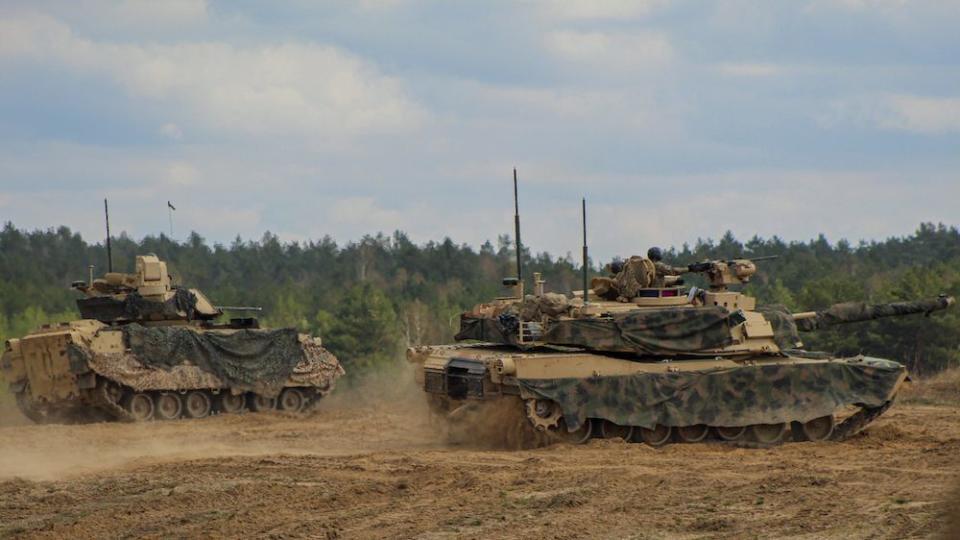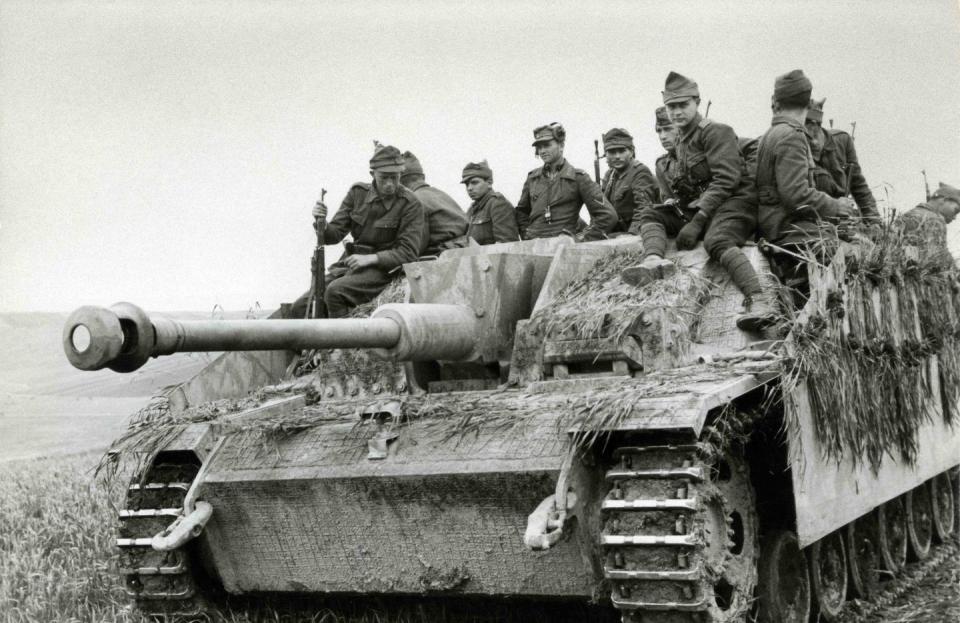The U.S. Army Is Getting Its First Light Tanks in More Than 50 Years

The U.S. Army awarded a contract to General Dynamics Land Systems for the new Mobile Protected Firepower vehicle.
Mobile Protected Firepower is a lightweight armored vehicle designed to provide direct fire support for light infantry and paratroopers.
The new vehicle is technically not a tank, having a different mission set, but sure looks and acts like one.
On Tuesday, the U.S. Army signed a contract to receive its first light tanks in more than half a century. The new Mobile Protected Firepower (MPF) vehicle will go not to the heavy armored and mechanized forces, but instead to the light infantry, airborne, and mountain units, bolstering their firepower and mobility.
The service awarded the contract to General Dynamics Land Systems, a military vehicle manufacturer based in Sterling Heights, Michigan. Worth $1.14 billion, the contract is for an initial batch of 96 vehicles. According to Defense News, at least eight of the 12 pre-production vehicles that the Army will use for trials will be retrofitted for active duty.

Mobile Protected Firepower looks like a tank: it has a turret and a four-person crew. The turret is armed with the M35 105-millimeter main gun and a coaxial 7.62-millimeter machine gun. The fire control system is derived from the system used on the M1 Abrams main battle tank, also produced by General Dynamics. Additionally, MPF uses a tracked chassis based on the British Army’s Ajax reconnaissance vehicle.
MPF is the Army’s first light tank since the introduction of the M551 Sheridan in 1969. The Sheridan was a light tank designed to operate in the Army’s cavalry reconnaissance units, and was also deployed to Vietnam. The Sheridan was equipped with a 152-millimeter hybrid gun/missile system that was designed to engage infantry and tanks at short range with conventional tank rounds, and longer-range targets with the Shillelagh anti-tank missile.

Unfortunately, the Shillelagh missile never quite worked well, reducing the Sheridan’s overall effectiveness; The tank was withdrawn from most Army tank and mechanized units within ten years. One unit where they remained, however, was the 82nd Airborne Division, which maintained a battalion of Sheridans and the capability to drop them via parachute from low altitude. The 82nd retired its M551s in the early 1990s.
MPF is basically a replacement for the M551. In the mid to late 2020s, the U.S. Army plans to convert its tank-less airborne, air assault, light infantry, and mountain divisions into new Joint Forcible Entry divisions. Each will be equipped with a battalion of 42 Mobile Protected Firepower tanks. National Guard units may also receive MPF vehicles, and smaller units like the Italy-based 173rd Airborne Brigade might receive a smaller contingent of about 14 vehicles. Heavy armored and mechanized units, such as the 1st Cavalry Division, will probably not receive any.

The Army is steadfast in its insistence that Mobile Protected Firepower is a non-tank. Although it can fulfill some tank missions, it lacks the armored protection to slug it out with other tanks and survive on a battlefield saturated with anti-tank guided missiles. MPF is meant to boost the firepower of tank-less units without loaning them 68-ton Abrams main battle tanks that are heavier and trickier to deploy overseas.
Army units with MPFs would likely keep them behind the front line, bringing them up to deal with stubborn obstacles such as enemy bunkers, strongpoints, and light armored vehicles. Although infantry have their own M3E1 recoilless rifles and Javelin anti-tank missiles, sometimes you just need a big gun to blow things up. In a pinch, MPFs could fend off full-sized enemy tanks, but the lack of heavy armor makes only defensive battles feasible.

In many ways, MPF is the equivalent of the World War II-era “assault gun,” an armored vehicle designed to support the advance of infantry and serve as an anti-tank reserve. One famous example was the German Sturmgeschütz III, a turret-less armored vehicle that was often attached to infantry units. Assault guns fell out of favor after the war, but the new Mobile Protected Firepower definitely bears a similarity of purpose.
The Army plans to have its first MPF unit in service by 2025. Ultimately, the service expects to buy up to 504 of the new vehicles—enough for 12 MPF battalions of 42 vehicles each.
You Might Also Like
